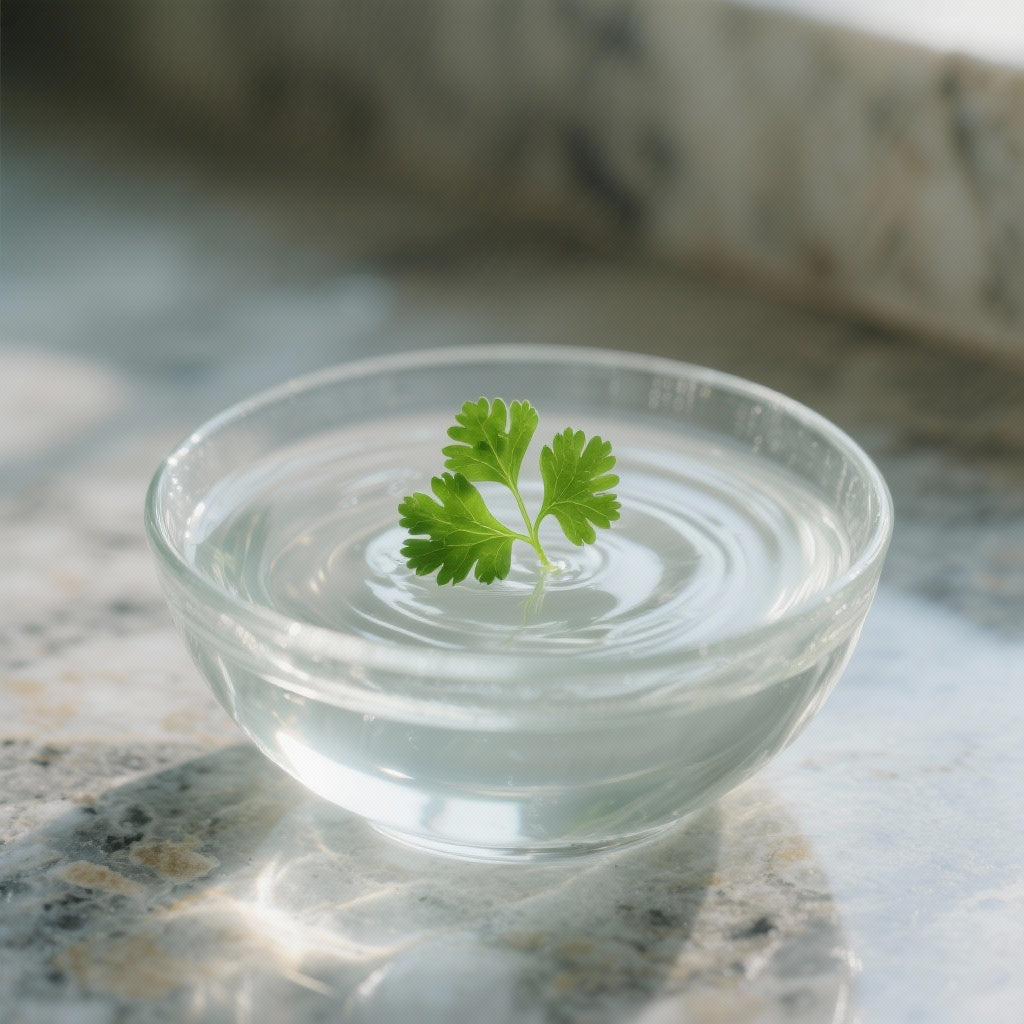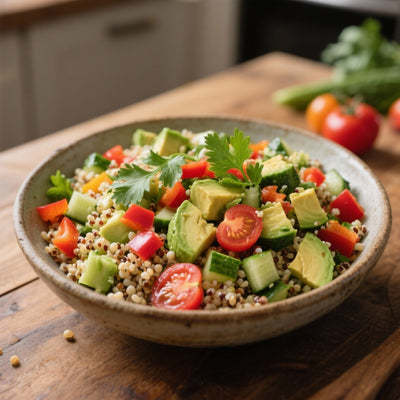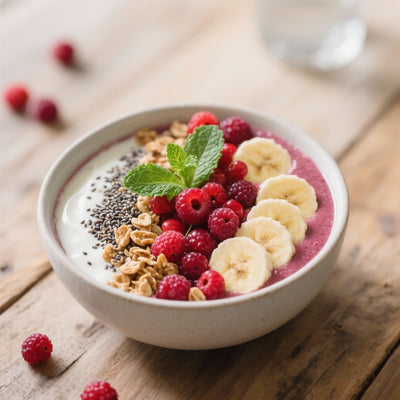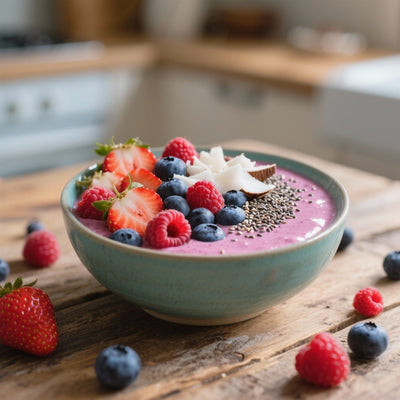What is natural chelation and how does it help eliminate toxins?
Do you sometimes feel tired, mentally foggy, or simply not performing at your best, even while leading a healthy lifestyle? You're not alone. In our modern world, our bodies are constantly bombarded by a myriad of invisible toxins: air pollutants, pesticides in our food, heavy metals in our water... This toxic burden can accumulate and hinder the optimal functioning of our systems. Faced with this challenge, a gentle yet powerful solution is gaining popularity: natural chelation . Far removed from harsh medical interventions, this approach harnesses the power of certain foods and nutrients to help the body "cleanse" itself from within. In this comprehensive guide, we'll demystify this process, explore the most effective natural chelating agents, and give you the tools to safely integrate this practice into your daily routine.
Understanding Chelation: The Great Cleansing of the Body
Before delving into the solutions, it's essential to understand the mechanism. The term "chelation" may sound complex, but its principle is remarkably elegant. It's a fundamental biochemical process that our body uses, to some extent, for self-protection.
What exactly is chelation?
Imagine a crab's claw (the word "chelation" comes from the Greek khēlē , meaning "claw"). A chelating agent is a substance that, through its molecular structure, can firmly bind to metal ions, much like a crab grasps an object with its claws. Once bound, this "agent-metal" complex becomes stable, water-soluble, and can be more easily excreted from the body via urine, bile, or sweat.
Two approaches must be distinguished:
- Medical chelation: This treatment uses powerful synthetic agents (such as EDTA or DMSA) administered intravenously. It is a complex treatment, reserved for cases of acute heavy metal poisoning, and must be supervised by a physician.
- Natural chelation: This is a much gentler and more gradual approach. It relies on consuming foods and supplements that possess natural chelating properties. The goal is not to treat severe poisoning, but to support the body's ongoing detoxification processes to reduce its overall toxic load.
Why are toxins and heavy metals a problem?
Our bodies are designed to handle a certain amount of toxins. However, chronic and cumulative exposure from our modern environment can overwhelm our systems. Heavy metals are particularly insidious. Lacking any useful biological function (for the most part), they can accumulate in our tissues—brain, bones, liver, kidneys—and disrupt cellular function for years.
The main culprits include:
- Mercury: Originating from dental amalgams ("grey fillings"), certain predatory fish, and industrial pollution.
- Lead: Found in old paints, old water pipes and some ceramics.
- Cadmium: Present in cigarette smoke and food grown on contaminated soils.
- Arsenic: Can contaminate drinking water and end up in rice.
"The accumulation of heavy metals can generate massive oxidative stress, one of the root causes of chronic inflammation and premature cellular aging."
The symptoms of a high toxic load are often vague and can include chronic fatigue, memory problems, joint pain, digestive issues, irritability, and headaches. Supporting the elimination of these substances is therefore a cornerstone of optimal long-term health.
Detox Superheroes: Natural Chelators
Nature offers us a veritable pharmacopoeia to aid us in this quest for purity. Certain foods and compounds stand out for their ability to mobilize and eliminate toxins. Here are the most studied and most effective.
Coriander (Cilantro): The Metal Mobilizer
This unassuming herb is actually a powerful detoxifying agent. Coriander is renowned for its ability to mobilize heavy metals, including mercury, stored deep within connective tissues and the nervous system. It acts like a key, unlocking toxins from their hiding places. However, it's crucial to understand that coriander alone can simply release the metals back into circulation. That's why it should always be used in conjunction with a binding agent that can trap them in the gut.
Chlorella: The Toxin Sponge
Here's the perfect partner for cilantro. Chlorella is a single-celled green microalga with a unique fibrous cell membrane. This membrane has the ability to bind irreversibly to heavy metals, pesticides, and other toxins found in the digestive tract. It acts like a sponge, capturing the toxins mobilized by cilantro (and others) and preventing them from being reabsorbed into the bloodstream. It then safely escorts them out of the body via feces.
The benefits of Chlorella:
- Powerful binding agent: Its main function in chelation.
- Rich in chlorophyll: Helps cleanse the blood and support the liver.
- Nutritious: Source of protein, vitamins and minerals that support the body during detox.
Garlic: The Sulfur Protector
Garlic is much more than just a condiment. Its power lies in its sulfur compounds, particularly allicin. Sulfur is an essential mineral for the liver's production of its most powerful internal antioxidant: glutathione . Glutathione plays a central role in neutralizing and eliminating toxins. Furthermore, garlic's sulfur compounds can bind directly to metals like lead and mercury, facilitating their excretion. Incorporating raw, freshly chopped garlic into your diet is a simple and effective way to support this process daily.
Alpha-Lipoic Acid (ALA): The Universal Chelating Agent
ALA is a unique antioxidant and a particularly interesting chelator. Its distinctive feature is that it is both water- and fat-soluble. This dual nature allows it to act in almost all tissues of the body. Most importantly, ALA is one of the few chelators capable of crossing the blood-brain barrier, enabling it to help dislodge heavy metals stored in the brain. It is a powerful tool, often used in supplement form, which requires a cautious approach and ideally, professional advice.
Putting Natural Chelation into Practice: A Step-by-Step Guide
Successful natural chelation doesn't involve taking high doses of supplements. It's a gradual approach that respects your body's capabilities. The golden rule is: slowly and surely .
Step 1: Prepare the ground - Support the Elimination Routes
Before you begin to dislodge toxins, you must ensure that the exit points are wide open. Attempting chelation with congested elimination pathways is like trying to empty a burning house through a locked door: the toxins released back into circulation will only make matters worse.
- Support your liver: It's your main filtering organ. Plants like milk thistle or foods like turmeric and cruciferous vegetables (broccoli, cauliflower) are excellent.
- Hydrate your kidneys: Drink enough pure water throughout the day to help with urinary elimination.
- Ensure good bowel movements: Elimination through stool is essential. Aim for at least one well-formed bowel movement per day. Increase your fiber intake (vegetables, flax seeds, psyllium) if necessary.
- Give your skin a workout: Sweating is a significant elimination pathway. Sauna sessions, hot Epsom salt baths, or regular physical activity are beneficial.
Step 2: Gradually Integrate the Chelating Agents
Once your elimination pathways are functioning properly, you can begin to incorporate chelators. Always start with small amounts to assess your body's reaction.
- Start with your diet: Add a handful of fresh coriander to your smoothies or salads. Eat raw garlic.
- Introduce a binder: Take a small dose of chlorella (for example, 1 gram) 30 minutes before your meal containing cilantro. The chlorella will work in the intestine to bind to what is released.
- Be consistent: Regularity is more important than intensity. A small daily dose is more effective and safer than a large weekly dose.
Beyond Chelation: A Detoxifying Lifestyle
Chelation is a tool, not a miracle cure. For lasting results, it must be part of a lifestyle that aims to reduce exposure and strengthen the body's natural defenses.
Minimize Exposure to Toxins
The best detox is the one you don't have to do. Reducing the intake of new toxins is fundamental:
- Filter your water: Invest in a good water filter (activated carbon, reverse osmosis) for drinking and cooking water.
- Eat organic: Choose organically grown foods to limit exposure to pesticides.
- Choose clean products: Opt for body care, makeup and household cleaning products with simple and natural compositions.
- Pay attention to containers: Avoid heating food in plastic and opt for glass, stainless steel or ceramic.











